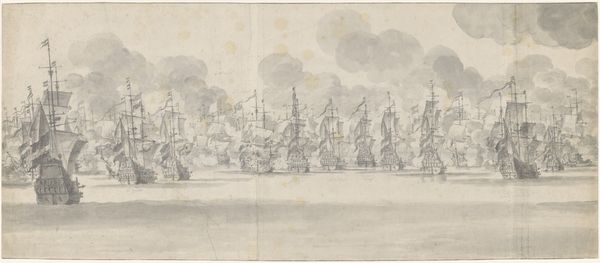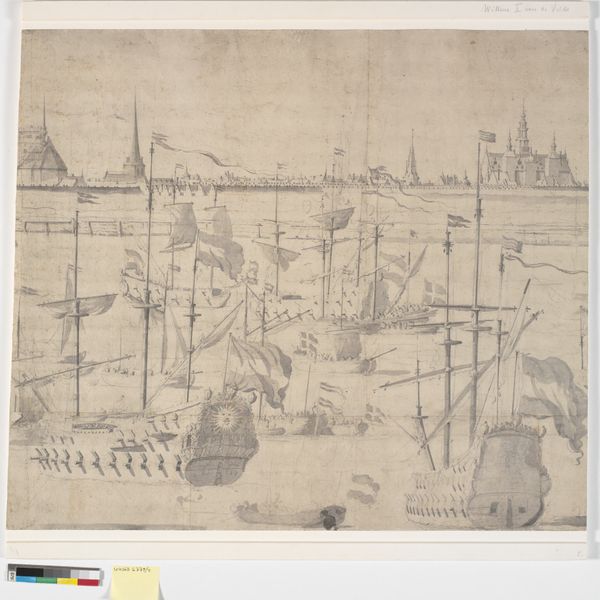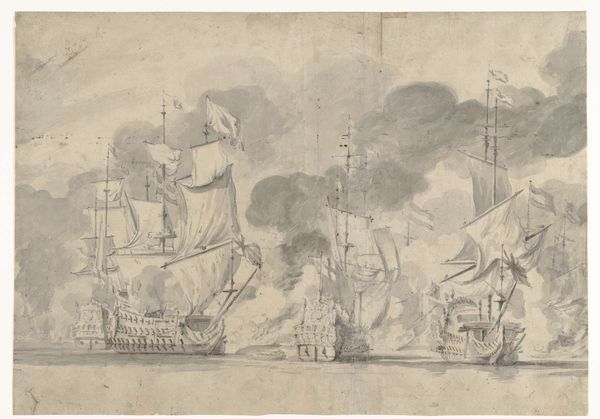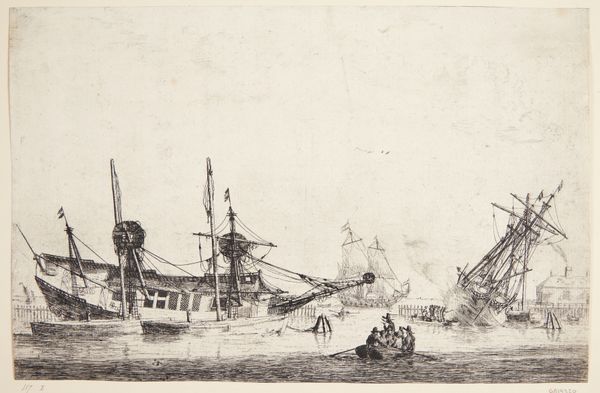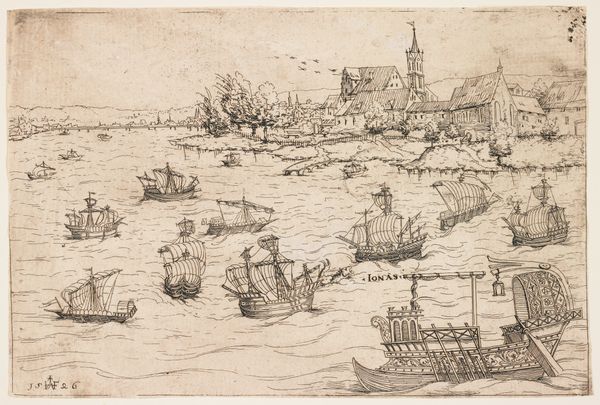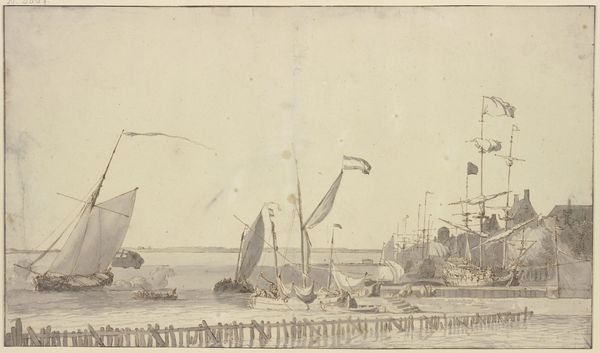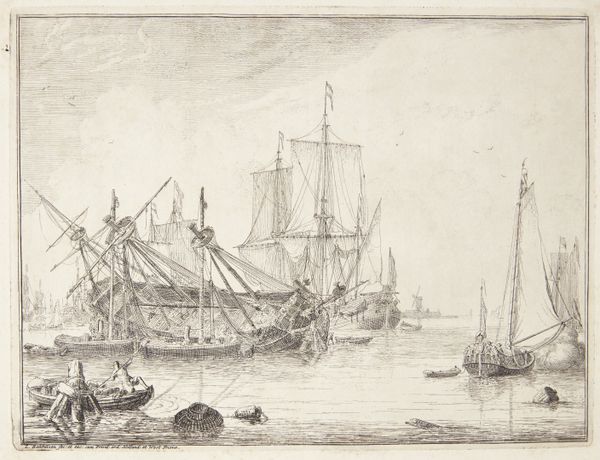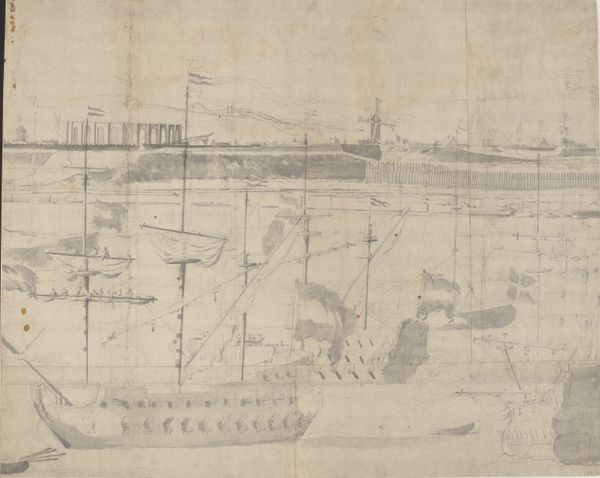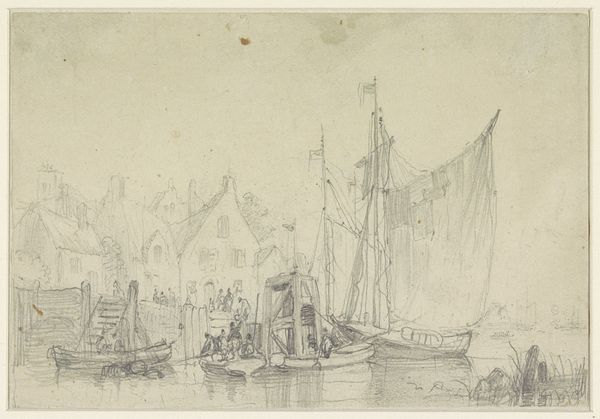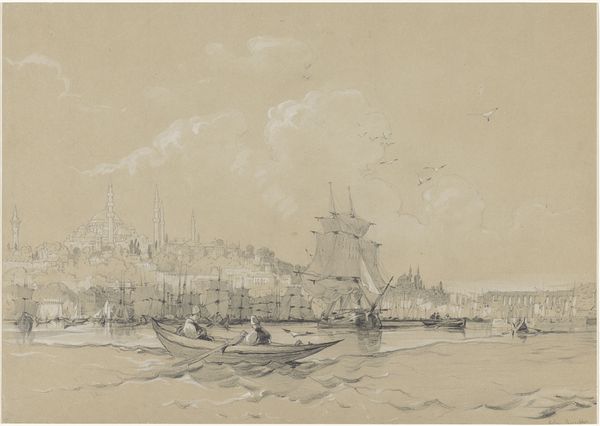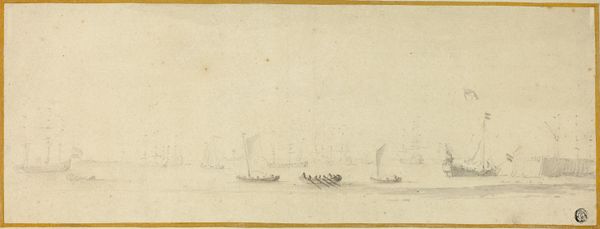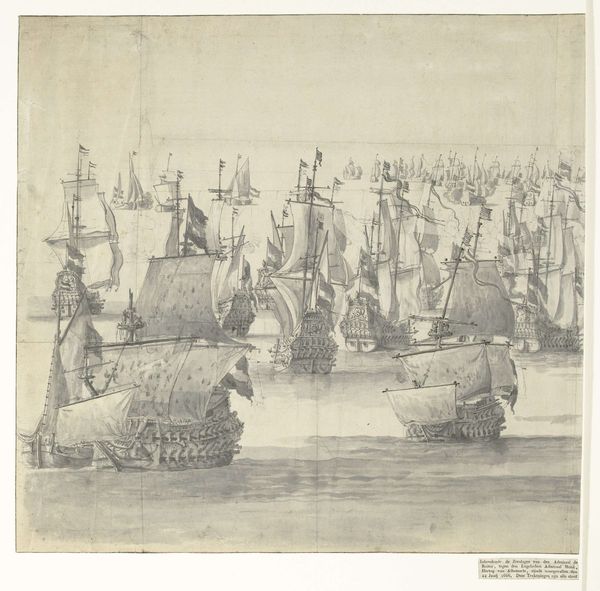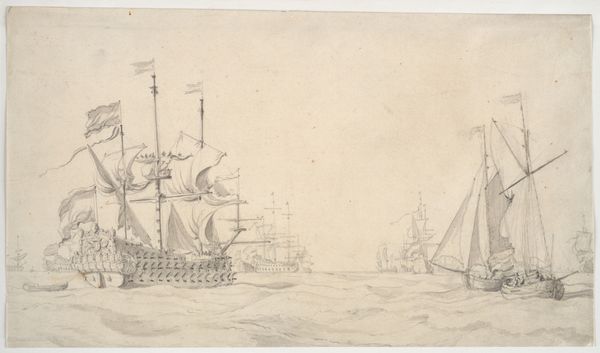
drawing
#
drawing
#
baroque
#
dutch-golden-age
#
landscape
#
cityscape
Dimensions: 537 mm (height) x 792 mm (width) (bladmaal)
Editor: Here we have Willem van de Velde I's "The Dutch Fleet at Anchor off Copenhagen," a drawing from 1658. It’s rendered in very fine detail, almost photographic. I find the muted grey tones create a strangely calm feeling despite depicting what I assume was a tense historical moment. What do you see in this piece? Curator: Indeed. What I see is a potent visualisation of power and the intersectional implications of naval dominance in the 17th century. Van de Velde I gives us more than just a picture of ships; he presents a study of Dutch ascendancy, which, of course, was built on complex, often exploitative, global trade networks. What's your impression of the setting itself? Editor: Well, I see Copenhagen as the backdrop…it's just there on the horizon, dominated by these massive ships. Curator: Exactly. And who does this imagery serve? This drawing was produced during a period of intense Anglo-Dutch Wars – naval conflicts driven by economic rivalry. The visual assertion of Dutch maritime power, the sheer number of vessels dwarfing Copenhagen's skyline… doesn’t that speak volumes about the artist's, and by extension the Dutch Republic's, intended message? Editor: It's like they are saying, "We are here, and we are powerful". I didn't immediately think about the angle of power when viewing the drawing, I saw ships. Curator: Consider also the historical context. 1658…the Second Northern War raging. This wasn't merely about trade routes; it was about reshaping the political landscape of the Baltic Sea. These 'peaceful' ships in the drawing carry implicit threats, which speak to how dominance functions through layered cultural messaging. How does understanding that shift your perspective? Editor: It's definitely more than just ships and cityscapes. The drawing performs Dutch supremacy, subtly asserting political and military control. I am glad to think beyond face value. Curator: Exactly, seeing the visual representation of the historical, political, and even societal contexts around art elevates our understanding of its intended message.
Comments
No comments
Be the first to comment and join the conversation on the ultimate creative platform.
